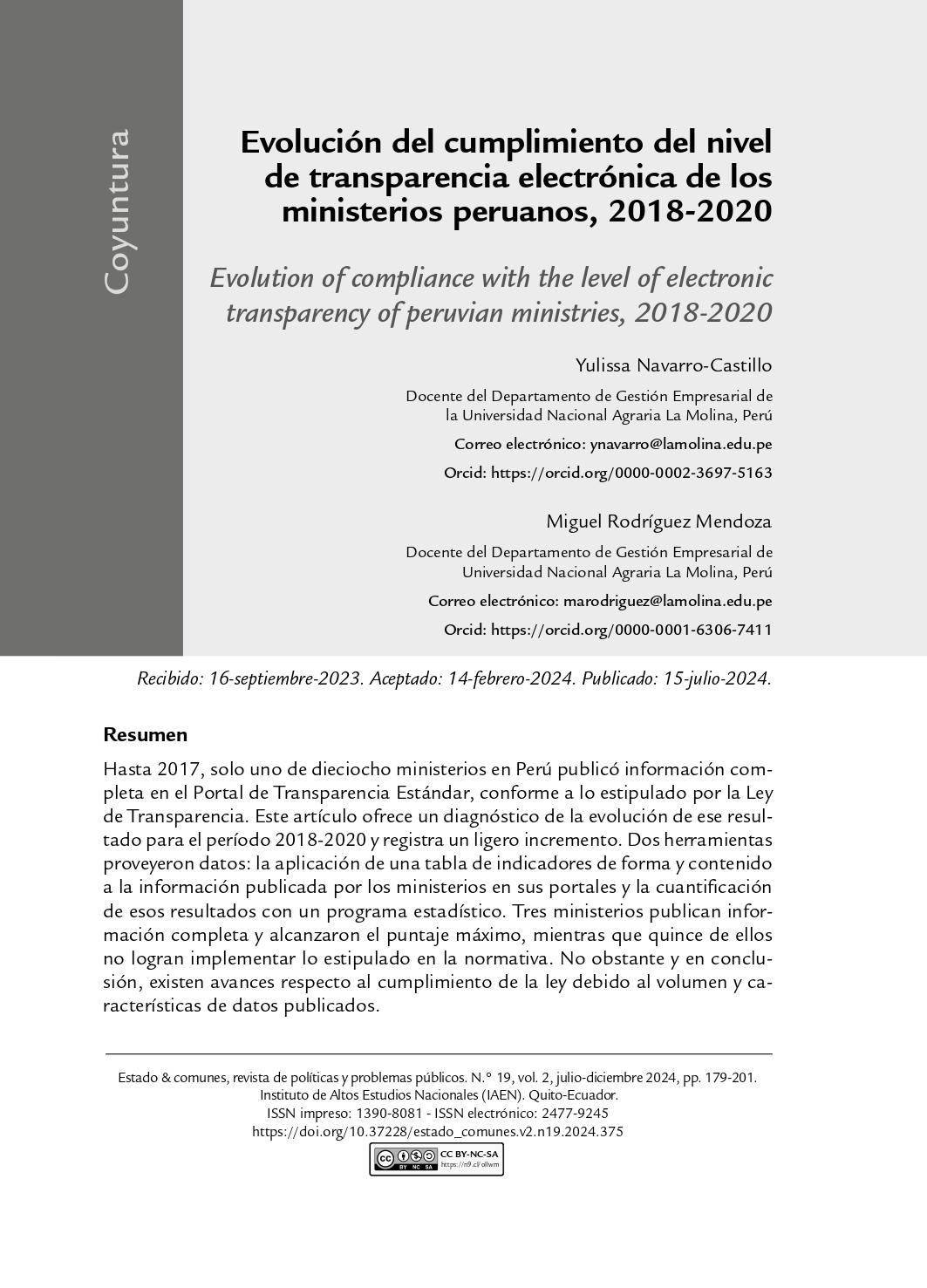Evolution of Compliance with the Level of Electronic Transparency of Peruvian Ministries, 2018-2020
Main Article Content
Abstract
Until 2017, only one out of eighteen ministries in Peru published complete information on the Standard Transparency Portal, as stipulated by the Transparency Law. This article provides a diagnosis of the evolution of that result for the period 2018-2020 and records a slight increase. Two tools provided data: applying a table of indicators of form and content to the information published by ministries on their portals and assessing these results with a statistical programme. Three ministries published complete information and reached the maximum score, while fifteen failed to comply with the law. Nevertheless, there is progress concerning compliance with the law due to the volume and characteristics of published data.
Downloads
Article Details
How to Cite
Issue
License
Copyright (c) 2024 Yulissa Navarro-Castillo, Miguel Rodríguez Mendoza











